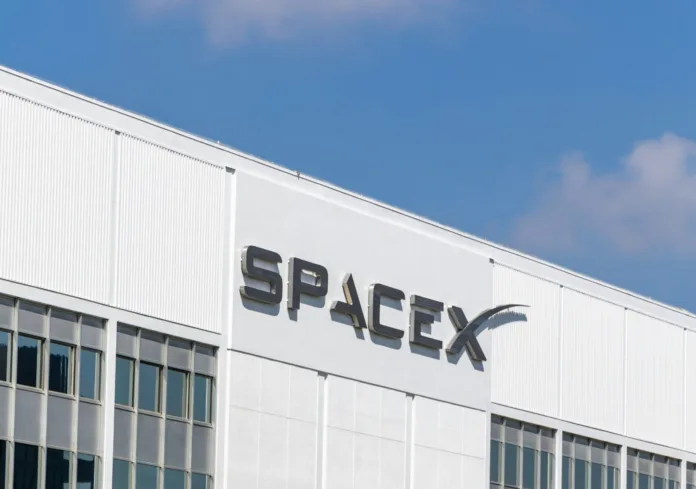Set for Tuesday’s launch, Starship Flight 6 will test advanced endurance capabilities and push SpaceX’s reusable rocket technology to new limits.
SpaceX is counting down to another major milestone as it prepares to launch Starship Flight 6 on Tuesday afternoon, Eastern Time. After completing the final propellant-loading tests and structural checks, the aerospace company has confirmed it is ready to proceed with the latest Starship test. This mission will see SpaceX attempt several new flight manoeuvres and technical feats, building on the achievements of October’s Flight 5.
Flight 6 will mark a significant progression for SpaceX, with the aim of advancing reusable rocket technology and pushing the Starship’s design closer to its long-term vision of interplanetary travel. The planned catch attempt of the Super Heavy booster, with tower arms designed to ‘snatch’ it in mid-air, is just one of many ambitious elements of the test. This innovative approach aims to reduce the need for expensive landing pads and further increase SpaceX’s turnaround speed. Meanwhile, the second-stage Starship is set to land softly in the Indian Ocean.
Unlike previous flights, Flight 6 will also involve a pioneering in-space Raptor engine reignition on the second stage. This reignition, critical for eventual deep-space missions, will allow engineers to assess the endurance of the Raptor engine under challenging space conditions. Additionally, SpaceX will conduct several new flight profiles to test the second stage’s limits, including a more intense reentry with a steeper angle. This particular approach is designed to collect essential data on Starship’s flaps and thermal protection systems.
“This launch represents a bold new phase in SpaceX’s efforts to make space travel more efficient and adaptable,” said SpaceX’s team in a statement on X (formerly Twitter), expressing confidence in the system’s capability for this highly demanding test.
In the days leading up to this flight, SpaceX transported the 232-foot Super Heavy booster to the launch pad in Texas, stacking it with the second-stage Starship before initiating rigorous pressurisation tests. These tests involved filling the rocket’s tanks with liquid oxygen and liquid hydrogen, and examining the vehicle’s structural integrity and stability under full load. Initially planned for an earlier date, the launch had to be delayed due to unfavourable weather, underscoring the unpredictable nature of such high-stakes tests.
Following Flight 5’s success in October, SpaceX’s rapid pace of testing is set to make Flight 6 the fastest turnaround for a full Starship stack. This achievement was made possible partly because the Federal Aviation Administration (FAA) granted simultaneous launch approval for both Flights 5 and 6, enabling SpaceX to skip the usual regulatory delays between launches. With Tuesday’s launch, the company aims to break ground in reusable rocket systems and close in on the ultimate goal of fully automated, rapid-fire space missions.
The first stage of the mission, involving the Super Heavy booster, is crucial to SpaceX’s plans. If weather and system checks hold up, the booster will complete a controlled return to the launch pad, where it will be caught by the launch tower arms—a high-risk, high-reward manoeuvre that could redefine rocket reusability. If for any reason the team is not confident in the catch mechanism, the booster will safely splash down in the Gulf of Mexico as a contingency.
The upper stage Starship spacecraft will be the main focus of the mission, with new upgrades designed to gather valuable data for future flights. For this test, SpaceX will intentionally remove heat shield tiles in selected areas on both sides of the spacecraft, simulating conditions it may encounter with planned catch-support hardware on future models. The company has also refined the heat shielding around these areas, aiming to validate thermal protection for challenging reentry scenarios.
The rigorous testing programme SpaceX has set for Flight 6 includes intense structural evaluations and aerodynamic trials, all aimed at strengthening the reusability and safety of Starship. Looking further ahead, SpaceX plans to implement upgrades on its second-generation Starship, set to fly on Flight 7. These improvements will include larger fuel tanks, redesigned flaps, and additional layers of thermal protection, and will allow the craft to attempt a full capture with the tower arms within the next six months.
The significance of these tests goes beyond pushing hardware; SpaceX’s iterative approach is expected to bring the company closer to establishing a cost-effective, reusable system for commercial space travel. If successful, the Starship system could usher in an era of rapid launches, facilitating both near-Earth operations and deep-space missions.
This mission underscores SpaceX’s pioneering efforts and commitment to continuous refinement in rocketry. As SpaceX founder Elon Musk has reiterated, the company is laser-focused on solving the many engineering challenges associated with reusability and efficiency, and each flight is a learning opportunity. Tuesday’s mission will be closely watched not only by SpaceX engineers but by the global space community as well, as the Starship programme continues its journey toward establishing a new standard for spaceflight.
